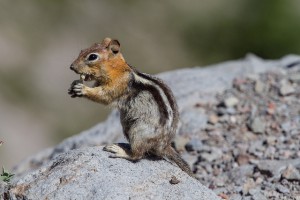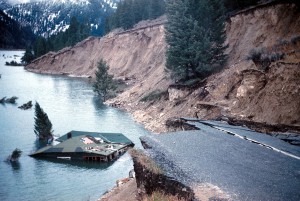National Park Service – One Hundred Years

From the desk of Rand Simmons
This August 25th the National Parks Service (NPS) celebrates one hundred years of service to the nation and, indeed, to the world. The year was 1916, but national parks, designated by various federal agencies, have existed far longer than the NPS. The first was the District of Columbia, authorized on July 16, 1790. It included the National Capital Parks, National Mall and the White House.

My personal relationship with National Parks was shaped by where I was born and where my father was born.
I was born in Canyonville, Oregon in Douglas County and spent my childhood in the little burg of Myrtle Creek. It was easy for my family to head to Crater Lake in the Oregon Cascade Mountains.
Established in 1902 as a national park, Crater Lake National Park predates the establishment of NPS and is the only national park in Oregon. An eruption of Mt. Mazama, a volcano in the Oregon Cascade Mountains, caused an implosion of the mountain and formed the lake. It is the deepest in the United States, has no inlets or outlets, and the blue of the water is almost indescribable. You can learn more about this the deepest lake in the United State at this site. Two childhood memories: Trying to spy the wizard on Wizard Island, the larger of two islands in the caldera-formed lake and, second, trying as I might to catch one of the wily park chipmunks or ground squirrels. No doubt I would have rued the results had I caught one.

My father was born and raised in Eastern Idaho. On the occasions that we would go to visit my aunts, uncles and dozens of cousins we would often make a trek to Yellowstone National Park. All my memories of Yellowstone are positive except for three — first, visiting the devastation caused by the Madison River flood in 1959 and seeing the ghostly lines of trees along the bank of the water marking the water level when the river was dammed and formed Quake Lake. That visit formed an indelible memory in my brain. Second, sadness upon learning that Old Faithful geyser was no longer predictable as a result of the same earthquake. And finally, as an adult with two young sons, viewing the damage of the great fire of 1988 and remembering stories effectively told by a park ranger.
This August we will celebrate 100 years of the marvelous work of the National Park Service through posts to our blog, Facebook site and Twitter account (look for #NPSCentennial). We will focus on Washington State’s national parks and feature other Washington NPS sites. We will connect you to resources in our collections. We hope we will inspire you to take pride in our historic and cultural treasures made possible by the stewardship of the National Park Service.
What is your connection to National Parks? A funny/scary story of a woman in a car that tried to feed a bear? Leaning over a guard railing to see what was in the canyon below while your dad held on to your shirt tail? Catching your first rainbow trout? Seeing your first moose? A solemn moment at a national historic site? A family reunion? The antics of ground squirrels stuffing their cheeks with peanuts tossed to them by tourist?
What’s your story? We would like to hear it. Or maybe you want to build some memories.
Here’s to another great 100 years of service to the people of the United States and the world.
Resources
The National Parks: Index. Washington, D.C: National Park Service, U.S. Dept. of the Interior, 1985. Print. Available at WSL: I 29.103: 2012-2016
The National Park Service released its 2012-2016 Index in time for the Centennial celebration. This is a must have for travelers especially if they are visiting multiple National Parks and other national sites, reserves and recreation areas maintained by the NPS.
“This index is a complete administrative listing of the National Park System’s parks and related areas, including historical documentation to distinguish between the types of National Park Service sites. It has been revised to reflect congressional actions. The entries, grouped by state, include administrative addresses and phone numbers, dates of authorization and establishment, boundary change dates, acreages, website addresses, and brief statements explaining the areas’ national significance.” However, this book is not intended as a guide for park visitors. “This resource should provide beneficial information to historians, especially State historians.” (Both quotes, GPO Bookstore, June 28, 2016).
Centennial junior ranger activity book. Not distributed to Federal Depository libraries. Available from the Government Printing Office.
McDonnell, Janet, and Barry Mackintosh. The National Parks: Shaping the System. Washington, D.C: U.S. Dept. of the Interior, 2005. Print. Available at WSL: I 29.2:SH 2/2005; Online at: https://ia800301.us.archive.org/20/items/nationalparkssha05system/nationalparkssha05system.pdf (other formats are available)
“US National Parks Timeline.” Travel, Landscape, and Nature Pictures – QT Luong Stock Photos and Fine Art Prints. N.p., n.d. Web. 28 June 2016. http://www.terragalleria.com/parks/info/parks-by-date.html.
Check out the Government Bookstore’s National Parks Collection, National Parks. U.S. Government Bookstore. N.p., n.d. Web. 28 June 2016.